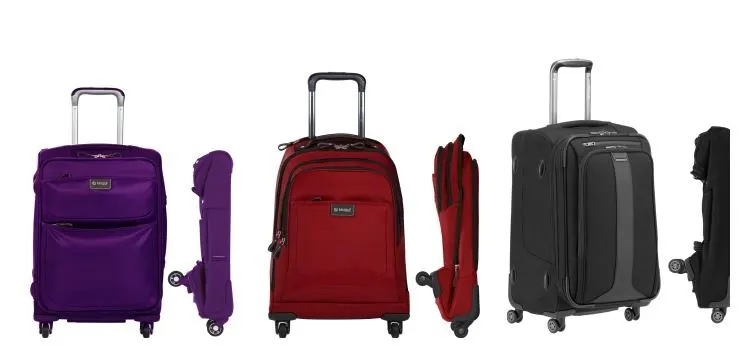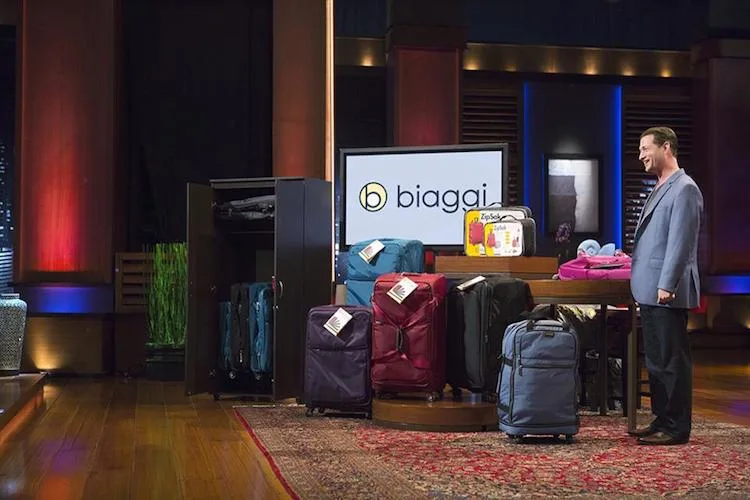
Grow with B2B Edition
More flexible than other SaaS platforms. Easier and faster than legacy solutions.

Wholesale Disruption, Digital Diversification and The Need to Own Your Brand from Craft to Crate

Before the days of simplified ecommerce set-up, wholesaling was an entrepreneur’s best bet for success. Through the wholesale model, an entrepreneur could source and craft quality products, build a brand reputation and then use that reputation to place their items in larger chain stores through which they could build a loyal clientele, and help said chain store do so as well.
The idea was akin to many marketing tactics of today: partner up and share the benefits of a larger chain’s audience and a smaller brand’s quality, ultimately resulting in more loyal shoppers who trust the tastes of the chain they love. The small brand gets the sales, the chain takes a cut, the shopper gets a unique product they couldn’t have otherwise found. It’s a win-win-win. What some might call the marketing trifecta.
Direct to consumer retail is a way we ensure that the family we have built can move on tomorrow.
Of course, b2b ecommerce disrupted that workflow, allowing those smaller brands to reach and build an audience all their own, without having to give a cut of the profits to a third-party. Let’s call it a win-win for the brand and the customer.
“As a young company, when you are working with wholesalers, a lot of times you can be victimized,” said Phillip Lim, designer and co-founder of 3.1 Phillip Lim, in an interview with Business of Fashion. “Direct to consumer retail is a way we ensure that the family we have built can move on tomorrow.”
In essence, the internet cut out the middle man, giving brands more power. With power, though, comes responsibility, including the need to market effectively to attract and maintain customer loyalty. Where wholesalers were once the knowledge purveyors of how to craft quality at scale, they now also have to master social media, maintain customer email lists, figure out point of sale and so much more.
The internet cut out the middle man, giving brands more power. With power, though, comes responsibility.
Stephen Hersh, co-founder of luggage company Biaggi, knows this storyline all too well. Hersh watched his father begin and successfully scale a wholesale business, Rosetti Handbags, in the 1990s. In launching a new business together in 2012, Hersh and his father (along with one additional business partner) found that the wholesale strategy that was so successful for Rosetti needed a refresh in the new world of ecommerce. With this realization, the trio kickstarted Biaggi as an innovative luggage company producing four-wheeled suitcases that can fold neatly for easy storage.
Below Hersh breaks down the particular difficulties and benefits of switching from selling wholesale to being consumer facing – as well as his strategies for success.
BC: What inspired you to start your business?

Hersh: I watched my father start a handbag company from scratch, and have success with it. That was the inspiration behind Biaggi. To see a startup have success from so close up makes the possibility of success a lot more real.
How did you create and source your product line?
I have a partner who lives in the Far East, and he handles all of the production and sourcing. I look at what’s doing well and what the customer wants. We communicate on a daily basis.
How did you get started with your online store?
Our company was initially set up to sell wholesale to brick and mortar only. We realized early on that having an online presence is so important today, and that selling direct to consumer was a no brainer for us.
What was the defining moment when you realized the shift from wholesale to B2C necessary?
In today’s marketplace, the consumer is extremely well educated. Smartphones and tablets allow them to go online even while they are in the store. You have to have a website, otherwise it’s like you don’t even exist. I wouldn’t say that I had a defining moment when I realized this, it was more like a change was taking place in the world around me – and I reacted.
Why did you decide to first go wholesale over B2C?
I sold wholesale before B2C because that was what I was accustomed to seeing. It used to be that you brought your product to the market by selling wholesale, and opening as many accounts as possible. If customers didn’t see you in the stores, then you had no hope of building a brand. Today you can build a brand online and through social media. So I had to make an adjustment and start selling direct to consumer.
What are the major differences between selling wholesale and B2C?
Selling B2C requires an entirely different mindset to selling wholesale. Managing inventory is very important for online wholesalers. That’s your major risk factor, and what occupies your mind when you buy goods from the factory. If you guess very wrong on a style or a color, then you are going to lose money.
With B2C you can test the waters a bit more. You are dealing directly with your customers, and they will tell you what they want without you having to bet the farm on it. Another major difference is the margins, which are obviously better with B2C. However, you still have a different challenge related to your cost to acquire traffic to your site. You can spend endless amounts of money acquiring traffic if you aren’t careful. So there are challenges with whole sale and also with B2C. They are completely different challenges though.
What are the differing challenges and advantages between wholesale and B2C?
The biggest challenges with wholesale are:
Inventory management, as I mentioned before.
With wholesale you are competing for space on the same selling floor with other brands who make a similar product to yours. Usually, the retailer will not allow you to show your product the way that you may think it needs to be shown. That’s because the retailer is thinking about their brand, and their store’s look and feel.
It isn’t always a great idea to be so innovative when you are selling wholesale. Many buyers are risk averse, and at wholesale it is sometimes better to stick with what works for that store already. For my company, this was and still is a major challenge.
Some of the advantages with selling wholesale are:
The quantities that you are selling are larger. This is a big advantage, mainly because of factory minimums but also for other obvious reasons.
The potential to sell your product to the mass market exists. With B2C. it is much more difficult to accomplish that. Just get your product into 4-5 of the major retailers who then sell it successfully to their customers – that happy thought is in the back of the mind of every manufacturer of consumer goods. While it is tough to get there, this is the single easiest way to get your product into the hands of as many people as possible.
The biggest challenges with B2C in my experience are:
Driving the right type of traffic to your website so that your marketing dollars are being spent wisely.
Dealing with minimum order quantities from the factories and finding an outlet for your unsold inventory without harming your brand.
Keeping up with the constantly changing ecommerce environment — after all it is still evolving a such a rapid pace.
The advantages with B2C are:
The margins are much better than wholesale margins.
You get to deal with your customer directly, and, if you play your cards right, you can really learn a lot about what they expect from your brand. That is a huge advantage.
Getting on Shark Tank must have been a huge boost for your business. How did that come about and what was the impact?

Shark Tank was huge for my brand exposure. Whatever I do to bring traffic to my website, being able to tell the customer that this brand got a deal on Shark Tank means a lot. It validates you in ways that you can’t imagine, and I’m going to ride the Shark Tank wave for as long as I can.
The way it came about was that Bigcommerce introduced me to one of the Shark Tank producers. After that, I had to send an application and a video. It’s a lot of work to get onto the show, and you need some luck as well. Thankfully, everything worked out for Biaggi in the end.
To prepare for my appearance I had to make sure that I knew my pitch perfectly, and I had to review all of the numbers and information associated with my business. You don’t know what the Sharks are going to ask you, and my biggest fear was the fear of not being able to answer a question properly. I’ve seen things turn south very quickly in the Tank, and I was determined to not allow that to happen to me.
The process was mostly good. I enjoyed the challenge of trying to get onto the show, and I thoroughly enjoyed being in the Shark Tank. Surprisingly, I was not nervous at all when I was in front of the sharks. People would be very surprised at how down to earth all of them are, and that includes Mr Wonderful. It was a pleasure spending time with them and discussing my business.
Aside from Shark Tank, what are your strategies for gaining B2C exposure and customers?
I believe that it is important to diversify. Obscure SEO strategies are confusing to me personally, and really difficult to quantify. I’ve done well with Adwords, retargeting and old fashion PR. Like I said earlier, the consumer today is very well educated. It helps a lot to get the endorsements of the experts and the media, because they are who the customer turns to for educated opinions about your products.
What have been your biggest challenges and biggest successes with ecommerce?
When we started Biaggi, we didn’t know a thing about selling online. Being the retailer is completely different than selling wholesale, and the dynamics involved with driving traffic to your website is a completely different story altogether. As far as successes go, I would say that we have come such a long way with our ecommerce business. We learned a ton, and are still learning so much. I’m personally enjoying the journey with our website as much as I have ever enjoyed any aspect of building my company.
What has been the most surprising part of your ecommerce journey?
The most surprising part of my ecommerce journey is seeing how similar it is to running a brick and mortar store. While the methods that you use to attract traffic to your site are certainly different, I have noticed that if you think like the customer then you will be able to achieve success.
What has been your most successful marketing strategy, other than Shark Tank?
I get most of my customers through old fashioned PR. Biaggi makes a unique product that travel writers and bloggers love to talk about. We address a problem that no other luggage brand addresses, so we are fortunate to be of so much interest to travel experts worldwide. People who follow and read what these experts write, find it difficult to resist checking us out.
Do you have a cool customer story, something that really exemplifies your store and your story?
I can’t think of any specific customer story, but I can say that having an online store can be extremely gratifying at times. Selling to brick and mortar stores, you don’t have much interaction with the end user. Having your own store, you hear from customers all the time. It’s helpful as a manufacturer to hear firsthand what your customer thinks of your product and what improvements they would like to see you make. Almost all of the feedback that we have received has been positive, so hopefully that means that we’re doing something right.
What are your goals for your business? Where do you see yourself in two years?
I want Biaggi to stand for innovation and change. We are newcomers to the luggage industry, and in some ways that may be a good thing. Right now Biaggi makes luggage that solves the storage issue related to luggage. In two years, I see Biaggi having several new concepts available for our customers.

Tracey is the Director of Marketing at MarketerHire, the marketplace for fast-growth B2B and DTC brands looking for high-quality, pre-vetted freelance marketing talent. She is also the founder of Doris Sleep and was previously the Head of Marketing at Eterneva, both fast-growth DTC brands marketplaces like MarketerHire aim to help. Before that, she was the Global Editor-in-Chief at BigCommerce, where she launched the company’s first online conference (pre-pandemic, nonetheless!), wrote books on How to Sell on Amazon, and worked closely with both ecommerce entrepreneurs and executives at Fortune 1,000 companies to help them scale strategically and profitably. She is a fifth generation Texan, the granddaughter of a depression-era baby turned WWII fighter jet pilot turned self-made millionaire, and wifed up to the truest of heroes, a pediatric trauma nurse, who keeps any of Tracey’s own complaints about business, marketing, or just a seemingly lousy day in perspective.